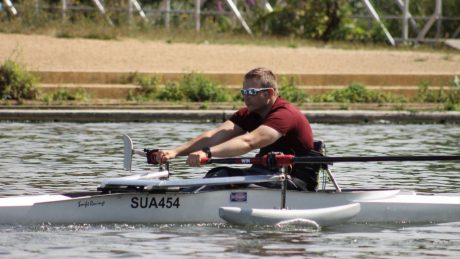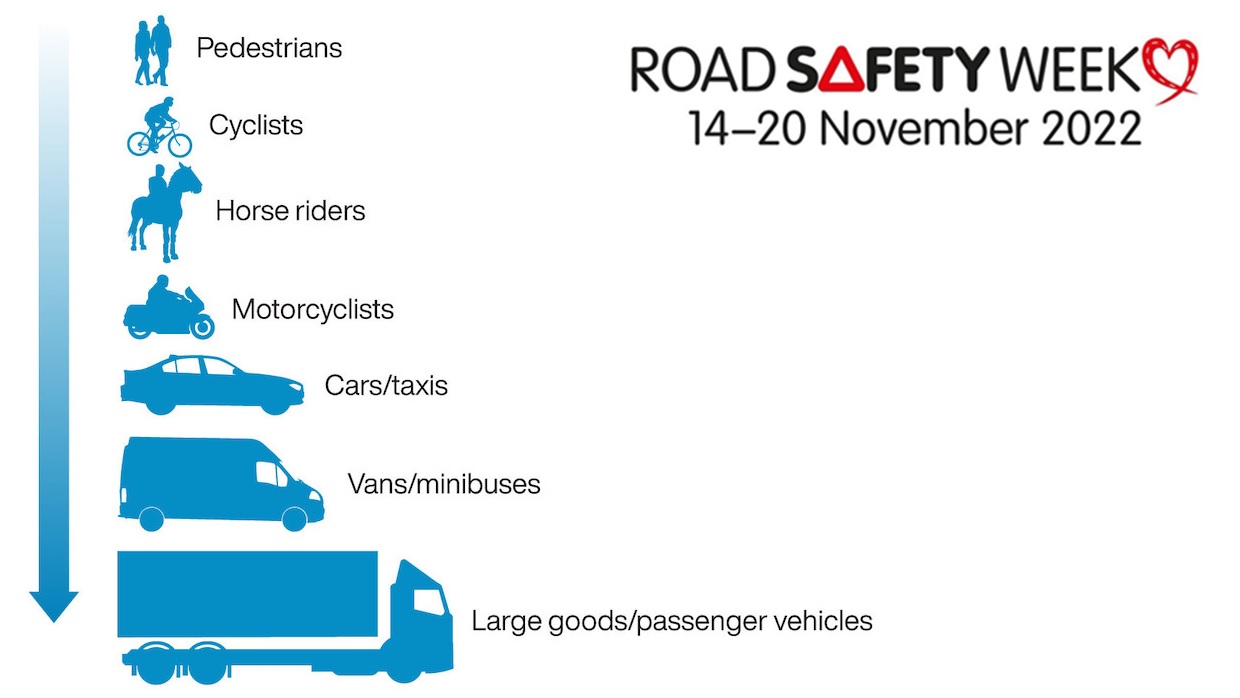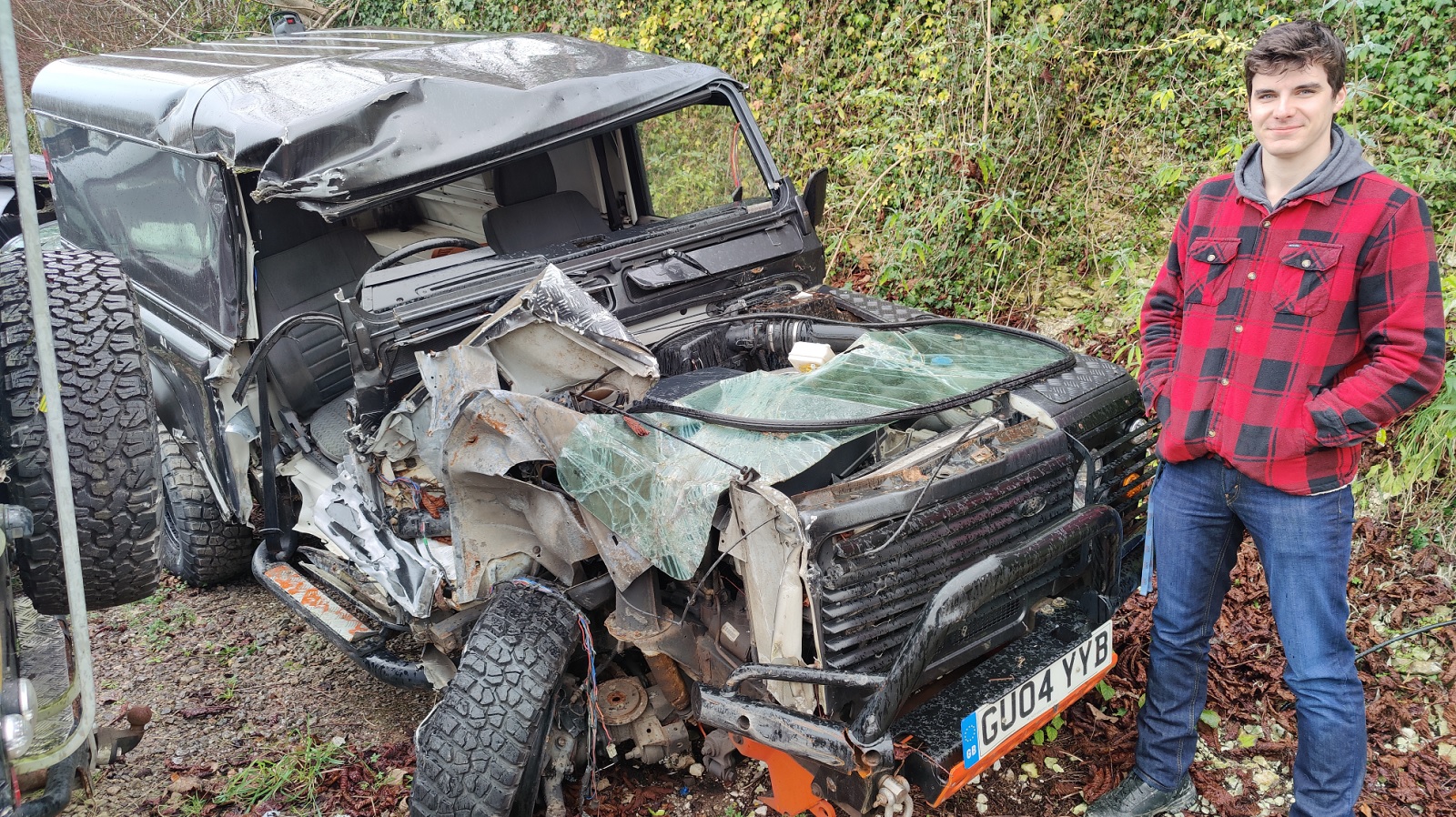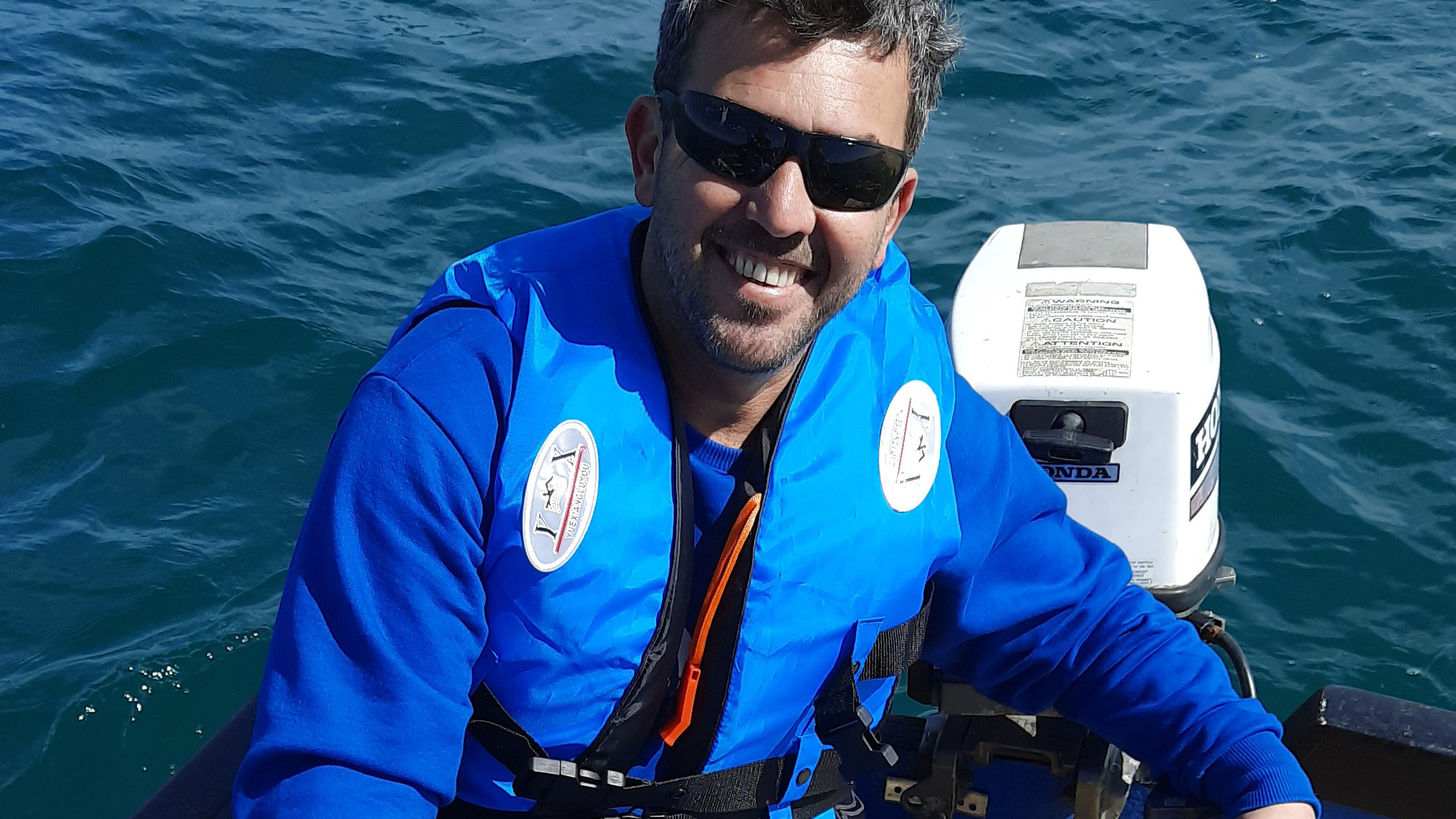Lee Cairns was serving in the Royal Air Force police when aged just 25, his car skidded on ice, causing a serious road accident. He had to be resuscitated at the scene. He suffered a spinal cord injury at T12, and after extensive rehabilitation, he was medically discharged from the RAF. He went on to have a career working for the emergency services, followed by working as a peer support officer in the charitable sector and then starting his own charity, Peer Advice Services UK.
For UK Disability History Month 2022, Alison Goldney met Lee to discuss his experience of returning to work following a spinal cord injury and provide some practical advice to those thinking of returning to work following a catastrophic injury.
Had you always wanted a career in the military?
Yes, from the age of five, I wanted to follow in my father’s footsteps into a military career; my father was in the RAF, then the Special Forces. However, the journey was not easy, as I had cerebral palsy as a child. My dad was always extremely supportive and encouraged me to be as fit as I could be. I recall telling a doctor aged five that I wanted to be in the military. He said that would not be possible with my condition, but that only made me more determined.
Being accepted into the RAF was one of the proudest moments of my life.
Can you describe your emotions when you realised you could not continue your role?
I recall waking in hospital, and my dad was at the end of my bed. He told me I’d had a car accident, suffered a spinal cord injury and was never going to walk again. It might sound odd, but the first thing that went through my mind was I was not going to be able to do my job. It was utterly devastating as this was the one thing I loved, the thing I had worked so hard to do and dreamt about since the age of five. In an instant, it had been taken from me.
During my rehab, I went to the closing down ceremony of the Police School at RAF Halton as it was moving locations. It was an opportunity to wear my uniform for the last time. I think I cried more that day than I did when my dad told me I would never walk again. I can’t explain it other than to say that being in the RAF was everything to me. It is not like a normal job; you are part of a family. When I joined, it finally felt that, for the first time in my life, I belonged.
Did you receive support from the RAF, financially and in relation to re-training?
Financially, from day one, it was made clear that I would be looked after. Fourteen months after my injury, I had my medical board, who discussed my options. These were to have a desk-based role or get medically discharged. A desk job was not what I’d joined the RAF to do. However, it was impossible for me to return to the police, given the physical nature of the role.
My current term of engagement with the RAF was due to expire two years from my medical board (the usual term of engagement being nine, 12, 15 or 22 years). It was explained that the promotion I was on course to get was no longer possible as I could not do the full job and undertake the required promotion courses.
I did not want to watch my peers all out on tour while I was sat at a desk; that was not what I’d joined up to do. I therefore decided to take the option of medical discharge. I was eligible for help with resettlement, which at the time was a CV writing course and £520 for a practical course, but this wasn’t appropriate for someone with a disability. As such, I left service with no help on that front. I’m pleased to say things are much improved for service leavers now.
At my medical board, I was told I would be entitled to apply for a war pension because of the nature of my injuries and the fact that they were sustained while on duty. As I made plans for the future, I applied for my war pension with the help of the Veterans Agency (which no longer exists). It took over a year to get a decision.
How did the position with the emergency services come about?
While at the Headley Court military rehab centre, I got my Motability car, which was an emotional thing after being in such a serious car accident. I was quite nervous being on the road again and getting used to an adapted vehicle. I was travelling near my home in a 30mph zone when somebody overtook me and nearly ran me off the road. I felt a mixture of anger and upset and decided to phone the police to report the incident, even though I knew it probably wouldn’t go anywhere as there were no witnesses.
I explained to the police switchboard what the problem was, and they put me through to one of the control room inspectors, who asked why I was so upset. I explained to him what had happened and the background of my accident. He was also ex-military, and he asked what was going to happen to me. I explained that I would be getting a medical discharge because of my spinal cord injury. He then asked if I might like to work for the police as some positions were coming up in the control room, and he thought I’d be well suited to the role.
I essentially had a phone interview, and 15 minutes later, they called me back asking if I could attend an induction evening. After that, I had an interview. I left Headley Court at the beginning of November 2005, and a few weeks later, I started working for the police full-time and remained there for six and a half years.
Were there any reasonable adjustments made to the workplace?
Yes, but not initially, because I began before the assessments had taken place. There was a big armoured door to get into the control room with a code box that I couldn’t reach. To get out of the building, I used to have to charge at the door from the end of the corridor and hope there was no one on the other side as I was coming in my wheelchair! This was because the exit button was spring-loaded, and with the weight of the door added in, I could not exert enough pressure or momentum to move the door. Internally, the control room was down a flight of stairs. There was a lift, but this could not be used in a fire. There was no escape chair or wheelchair-accessible fire exit out of the control room, and I didn’t have a proper chair to sit in at my desk.
Once the assessment was undertaken, an automatic door opener was fitted to the main access corridor, and they provided me with my own special keypad to use to enter the control room. To get out, they fitted a sensor on the wall at my height, which I just had to touch with my card and the door would open. A camera system was fitted so people could be buzzed in if they had a problem with their entry cards or didn’t have an entry card. It was so high that when I pressed the button, wherever I put myself, I couldn’t be seen in my wheelchair. On occasion, when I had to use it, I had situations where I would push the button, but I wasn’t visible and so would be sat outside for a while until someone noticed me.
There were disabled parking spaces, but there would be instances when I would go to work, and all the disabled spaces were full, often with able-bodied people parking in the spaces. This meant I could not go to work and would be sent home. This happened several times.
Access to Work was relatively unknown to employers at this time, and I had to research and advise my employer about what was available through the scheme. I ordered a Levo standing chair. There were height-adjustable desks in the control room so I could stand up, but they were spring-loaded. I would push the button, and the desk would just go up, and I would have to get someone else to pull the desk down for me.
How did flexible working enable you to return to work?
I started working full-time because I didn’t know I would get my war pension. Within three weeks of starting and trying to work full-time, I became quite ill because shift work with a spinal injury doesn’t work in terms of trying to do your morning routine at 2am (to enable you to get to work for 9am start).
It was then agreed I could work part-time Monday-Friday, 10am-3.30pm. They agreed to waive the Working Time Regulations so that I did not have to take a lunch break because there were no comfortable chairs. I couldn’t get out of my wheelchair, so there was no point in having a break. It was, however, very uncomfortable being stuck in the chair all day without any support for my shoulders while working at a desk.
Why did you leave the role?
I had been in the role for six and a half years, and the job had many positive aspects, including giving me the confidence to return to work after my spinal injury. However, I found the post-traumatic stress disorder (PTSD) symptoms I experienced after my accident returned, and I was struggling to cope. In addition, I was ambitious and had gone for a few roles but been turned down. I sensed from conversations with HR it was in part because of my disability.
I realised that a static control room/office environment wasn’t best suited to living with a spinal cord injury. There were times when I would struggle to make my start time of 10am. The morning routine with a spinal cord injury can be unpredictable, and there is no room for manoeuvre when you have a fixed start time, as this would mean being late for work. In a pressured shift environment for an emergency service, there is the added factor that being late is one less person answering calls. It puts the public at risk and adds a burden to work colleagues taking up the slack. The static nature of the job created significant discomfort, which meant I could only sustain 4.5 hours of work. The impact of this environment was severe recurrent urinary tract infections and a significant amount of time off sick. This can very quickly make you feel like a burden and a bit of a failure. I sustained it for six and a half years, but in 2012 I realised I needed a change for my health and well-being.
What employment did you move to?
My experience with the police was a significant learning curve. I realised I needed an extremely flexible role with an element of working from home so that if there were days I was not well, it was not a problem. I was lucky enough to find a role within the charitable sector supporting other service personnel and veterans who, like me, had a spinal cord injury. The hours suited me well. I didn’t have to work set hours, so long as I got the work done. That is very important when you have a spinal cord injury because undertaking your morning routine, for example, can take hours. Not having the rigidity of a 9am start made all the difference to my ability to work. It was 20/21 hours a week, but I increased it to 28 hours as the role required more input.
To assist me with this role, I obtained from an Access to Work grant a new wheelchair but didn’t need anything else as I was based at home and visiting Headley Court (now Stanford Hall) once a week.
In a second article to be published next week, Lee will explain more about the Access to Work Scheme and how to use it.
You can find further information regarding our expertise, experience and team on our Personal Injury pages.
If you require assistance from our team, please contact us or alternatively request a call back from one of our lawyers by submitting this form.
Subscribe – In order to receive our news straight to your inbox, subscribe here. Our newsletters are sent no more than once a month.







